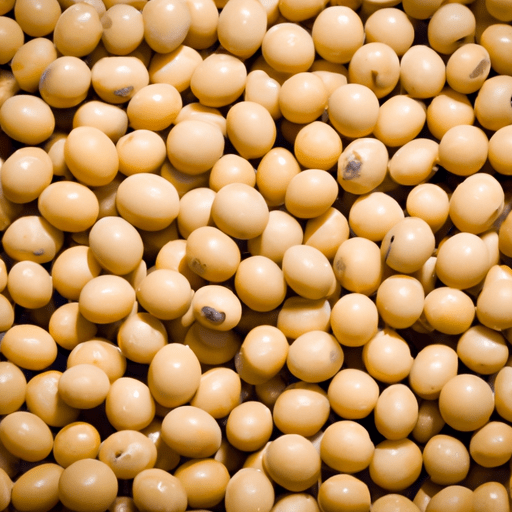Explore the Versatility and Goodness of Dried Soy Beans
Dried soy beans, a staple in many Asian cuisines, are a versatile and nutritious ingredient that deserves a place in your pantry. With their delightful taste, numerous cooking possibilities, and impressive nutritional profile, these little legumes have been enjoyed for centuries. In this blog post, we will delve into the world of dried soy beans, exploring their taste, common culinary uses, nutritional value, and intriguing history.
Uncovering the Taste of Dried Soy Beans
Dried soy beans have a subtly nutty and earthy flavor that becomes more pronounced when cooked. Though not as prominent as their tofu or soy milk counterparts, the taste of dried soy beans can be appreciated in a range of dishes. Their versatile flavor makes them an excellent base for both savory and sweet preparations, allowing for limitless gastronomic creativity.
Common Uses in Cooking
Dried soy beans lend themselves to a wide array of culinary applications, making them an invaluable addition to any kitchen. Here are some common ways they are utilized in cooking:
1. Soaking, Boiling, and Simmering
To prepare dried soy beans for cooking, they first need to be soaked in water overnight. Once softened, they can be boiled or simmered until tender. These cooked soy beans are used as a base for various dishes, such as soups, stews, and curries. Their creamy texture and subtle taste make them perfect for absorbing the flavors of other ingredients.
2. Homemade Soy Milk
Ground or blended cooked soy beans can be used to make soy milk. This dairy alternative is highly nutritious and can be enjoyed as a standalone beverage or used in recipes that require milk, such as smoothies, desserts, and baked goods.
3. Fermented Delights
In Asian cuisines, dried soy beans play a vital role in fermented soy products such as miso, tempeh, and natto. These traditional foods offer unique flavors and textures while providing beneficial probiotics and essential nutrients.
4. Snacks and Spreads
Roasted dried soy beans make an excellent protein-rich snack or topping for salads and grain bowls. They can also be transformed into delightful spreads, similar to hummus, adding a healthy and flavorful twist to sandwiches and wraps.
Nutritional Excellence
Apart from their culinary versatility, dried soy beans pack a serious nutritional punch. They are an excellent source of plant-based protein, making them a valuable ingredient for vegetarians and vegans. Additionally, dried soy beans are rich in dietary fiber, which aids digestion and supports heart health. They are also a good source of iron, calcium, potassium, and various vitamins, contributing to an all-around balanced diet.
A Glimpse into Soy Bean History
Dried soy beans boast a fascinating history that dates back thousands of years. Originating in East Asia, they have been cultivated and enjoyed in this region for over 5,000 years. Soybeans eventually made their way to the West in the 18th century, where they gained popularity as a cheap source of protein and a versatile meat substitute. Today, soybeans are grown and consumed worldwide, contributing to the diverse culinary landscape.
Time to Embrace Dried Soy Beans
Dried soy beans can elevate your cooking with their distinctive taste and remarkable versatility. Whether you choose to simmer them in a hearty stew, whip up homemade soy milk, or explore the world of fermented soy products, these legumes offer a multitude of delicious and nourishing possibilities. With a rich history and an exceptional nutritional profile, dried soy beans are an ingredient worth exploring further in your culinary adventures.
So why not add a bag of dried soy beans to your pantry? Embark on a flavorful journey and experience the joys of cooking with this incredibly versatile and nutrient-dense ingredient.
Dried Soy Beans
Origin: Soybeans, scientifically known as Glycine max, are native to East Asia and have been cultivated in China for over 3,000 years. They were introduced to Europe in the 18th century and later to the Americas.
Common Uses: Dried soybeans are versatile and used in various ways. They can be cooked whole and added to soups, stews, and salads. They can also be mashed or ground into soy flour, which is used in baking. Soy milk, tofu, tempeh, and soy sauce are also popular soybean-based products.
Nutritional Benefits: Dried soybeans are highly nutritious. They are an excellent source of plant-based protein, providing all nine essential amino acids. They are also rich in dietary fiber, iron, calcium, and other minerals. Additionally, they contain omega-3 fatty acids, vitamin K, and various phytochemicals, such as isoflavones.
Unique Properties: Soybeans have some unique properties that make them distinct from other legumes. One of these is their high oil content, which makes them the primary source of vegetable oil in the world. Soy oil is used for cooking, as an ingredient in processed foods, and in the production of biodiesel. Soybeans are also unique in that they contain isoflavones, which are plant compounds that can act as phytoestrogens in the human body.
Historical Significance: Soybeans have played a significant role in various cultures throughout history. In China, soybeans have been cultivated and consumed for thousands of years, both as a food source and for their medicinal properties. In Japan, soybeans are a traditional ingredient used in the production of tofu and soy sauce. With increasing global demand for plant-based proteins, the cultivation and consumption of soybeans continue to be of great importance.




Use the share button below if you liked it.
It makes me smile, when I see it.